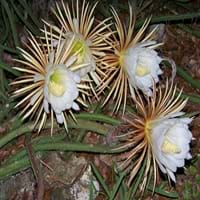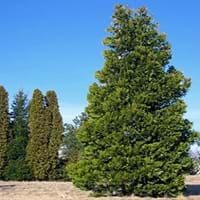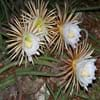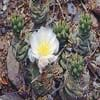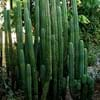Life Span
Annual and Perennial
Annual and Perennial
Type
Cactus or Succulent
Tree
Origin
Mexico, Caribbean, Central America, South America
Western United States, California, Mexico
Types
Not avilable
Not Available
Habitat
Desert
low mountains, Mountain tops, Subtropical climates, Temperate Regions
USDA Hardiness Zone
Not Available
5-8
AHS Heat Zone
Not Available
8-1
Sunset Zone
Not Available
1a, 1b, 2a, 2b, 3a, 3b, 4, 5, 6, 7, 8, 9, 10, 11, 12, 14, 15, 16, 17, 18, 19, 20, 21, 22, 23, 24
Habit
Weeping
Upright/Erect
Minimum Width
Not Available
Flower Color
Dark Salmon, Sandy Brown, White, Yellow
Non Flowering Plant
Flower Color Modifier
Multi-Color
Bicolor
Fruit Color
Green
Sandy Brown
Leaf Color in Spring
Not Available
Green
Leaf Color in Summer
Not Available
Green
Leaf Color in Fall
Not Available
Green
Leaf Color in Winter
Not Available
Green
Leaf Shape
Succulent
Pinnate
Plant Season
Not Available
Spring, Summer, Fall, Winter
Sunlight
Full Sun, Partial shade
Full Sun, Partial Sun
Type of Soil
Sand
Loam, Sand
The pH of Soil
Alkaline, Neutral, Not Available
Acidic, Neutral
Soil Drainage
Well drained
Well drained
Bloom Time
Early Spring, Early Summer, Late Spring, Late Winter, Mid Spring
Not Available
Repeat Bloomer
Not Available
No
Tolerances
Drought
Drought
Where to Plant?
Container, Ground, Pot
Ground
How to Plant?
Grafting, Seedlings
Stem Planting
Plant Maintenance
Medium
Medium
Watering Requirements
Average Water Needs
Needs less watering, Water occasionally
In Summer
Lots of watering
Lots of watering
In Spring
Moderate
Moderate
In Winter
Average Water
Average Water
Soil pH
Not Available
Acidic, Neutral
Soil Type
Not Available
Loam, Sand
Soil Drainage Capacity
Not Available
Well drained
Sun Exposure
Not Available
Full Sun, Partial Sun
Pruning
Not Available
Prune if you want to improve plant shape, Remove damaged leaves, Remove dead branches, Remove dead leaves
Fertilizers
All-Purpose Liquid Fertilizer
No fertilizers needed
Pests and Diseases
Not Available
Insects
Plant Tolerance
Drought
Drought
Flower Petal Number
Semi-Double
Not Available
Fragrant Leaf
Not Available
Yes
Fragrant Bark/Stem
No
Yes
Foliage Texture
Bold
Medium
Foliage Sheen
Not Available
Matte
Attracts
Not Available
Birds
Allergy
Itchiness
no allergic reactions
Aesthetic Uses
Hanging Basket, Showy Purposes
Showy Purposes
Beauty Benefits
Not Available
Not Available
Environmental Uses
Not Available
Air purification
Medicinal Uses
Not Available
Stomach pain
Part of Plant Used
Fruits, Nut
Bark, Leaves
Other Uses
Used As Food, Used as Ornamental plant, Used for Landscaping
Making Perfumes, Used in pencil industry
Used As Indoor Plant
Yes
No
Used As Outdoor Plant
Yes
Yes
Garden Design
Container, Houseplant, Lawns and Turf, Mixed Border, Not Available, Tropical
Screening / Wind Break, Shade Trees, Street Trees
Botanical Name
Selenicereus pteranthus
CALOCEDRUS decurrens
Common Name
Selenicereus, Moonlight cactus
Incense Cedar
In Hindi
moonlight cactus
Incense Cedar
In German
Selenicereus
Zeder
In French
Selenicereus
Encens Cedar
In Spanish
Selenicereus
cedro de incienso
In Greek
Selenicereus
θυμίαμα Κέδρος
In Portuguese
Selenicereus
cedro de incenso
In Polish
Selenicereus
kadzidło Cedar
In Latin
moonlight cactus
incensum Cedar
Phylum
Tracheophyta
Tracheophyta
Class
Magnoliopsida
Pinopsida
Order
Caryophyllales
Pinales
Family
Cactaceae
Cupressaceae
Genus
Selenicereus
Calocedrus
Clade
Angiosperms, Core eudicots, Eudicots
Not Available
Tribe
Hylocereeae
Not Available
Subfamily
Cactoideae
Not Available
Number of Species
Not Available
Not Available
Difference Between Moonlight cactus and Incense Cedar
If you are confused whether Moonlight cactus or Incense Cedar are same, here are some features about those plants to help you choose better. Many people think that these two plants have the same characteristics, but one can see Moonlight cactus and Incense Cedar Information and learn more about it. Fertilizers required for proper growth of Moonlight cactus are All-Purpose Liquid Fertilizer, whereas for Incense Cedar fertilizers required are No fertilizers needed. Hence, one should know the basic difference between Moonlight cactus and Incense Cedar if you are planning to have them in your garden to enhance its beauty.
<
Flowering PlantsImportance of Moonlight cactus and Incense Cedar
Want to have the most appropriate plant for your garden? You might want to know the importance of Moonlight cactus and Incense Cedar. Basically, these two plants vary in many aspects. Compare Moonlight cactus and Incense Cedar as they differ in many characteristics such as their life, care, benefits, facts, etc. Every gardener must at least have the slightest clue about the plants he wants to plant in his garden. Compare their benefits, which differ in many ways like facts and uses. The medicinal use of Moonlight cactus is Not Available whereas of Incense Cedar is Stomach pain. Moonlight cactus has beauty benefits as follows: Not Available while Incense Cedar has beauty benefits as follows: Not Available.
Compare Facts of Moonlight cactus vs Incense Cedar
How to choose the best garden plant for your garden depending upon its facts? Here garden plant comparison will help you to solve this query. Compare the facts of Moonlight cactus vs Incense Cedar and know which one to choose. As garden plants have benefits and other uses, allergy is also a major drawback of plants for some people. Allergic reactions of Moonlight cactus are Itchiness whereas of Incense Cedar have no allergic reactions respectively. Having a fruit bearing plant in your garden can be a plus point of your garden. Moonlight cactus has showy fruits and Incense Cedar has no showy fruits. Also Moonlight cactus is flowering and Incense Cedar is not flowering . You can compare Moonlight cactus and Incense Cedar facts and facts of other plants too.
